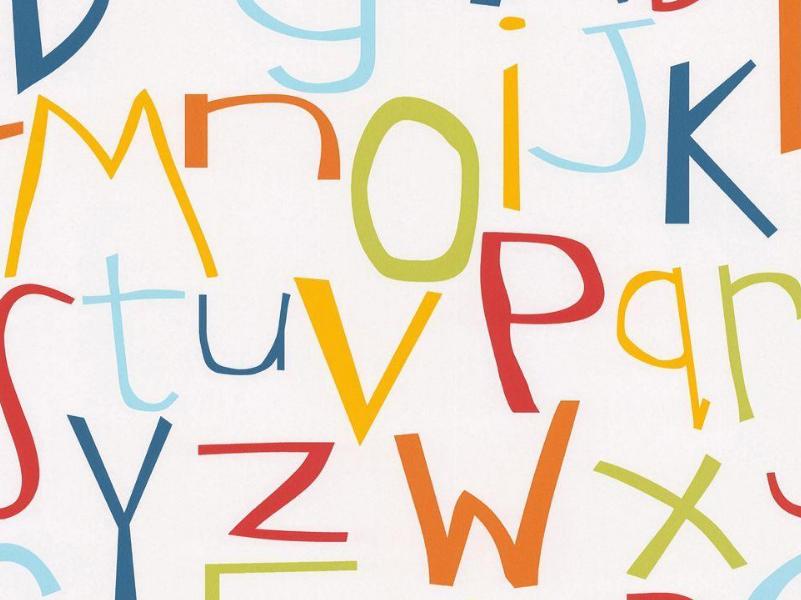Uraian: Passive Voice (Lengkap)
Namun tak ada salahnya sebelum membaca ulasan tentang Passive Voice ada baiknya Anda selaku pembaca, menyimak baik-baik apa yang akan kita kupas dibawah. Seperti pepatah bilang: "Berburu kepadang datar, dapat rusa belang kaki. Berguru kepalang ajar bagai bunga kembang tak jadi". Tentu Anda sudah tahu maksudnya bukan? Oke, langsung ke pembahasannya saja yuk?
Pembahasan Lengkap Passive Voice
Passive voice atau kalimat pasif merupakan suatu bentuk penekanan yang ada pada objek (receiver of action), sementara kalimat aktif menekankan subjek ataupun pelaku kegiatan (doer of action).
Tak hanya menitikberatkan pada objek, passive voice ini juga dimanfaatkan sebagai pernyataan pada saat subjek maupun pelaku tidak diketahui dengan jelas / menandakan jika subjeknya berupa benda mati.
Sebab fokusnya berupa subjek & objek di dalam kalimat, pemakaian pronoun & kata kerja bentuk ketiga (verb 3) juga perlu untuk dipahami.
Sebelum membahas lebih lanjut, kenali rumus dasar passive voice berikut ini:
Passive voice = auxiliary + past participle
Keterangan:
- Auxiliary: Is, am, are, was, were, has, have.
- Past participle: bentuk past atau perfect dari suatu kata.
Rumus passive voice ini tidak hanya sebatas pada rumus dasar tersebut, tetapi tergantung dengan tenses yang dipakai.
Pada masing – masing tenses mempunyai bentuk kalimat yang berbeda.
Pada umumnya, passive voice ini juga disertai dengan penggunaan kata by atau yang artinya “oleh”. Namun tidak semuanya wajib menggunakan by.
Fungsi Passive Voice

Passive voice dipakai guna menunjukkan ketertarikan kepada seseorang maupun objek yang dikenai tindakan dan bukan seseorang ataupun objek yang melakukan tindakan.
Sehingga, benda atau orang yang terpenting nantinya akan menjadi subjek kalimat.
Contoh:
- The passive voice is used frequently.(Artinya kita tertarik pada kalimat pasif, bukan siapa yang memakainya).
- The road is being repaired. (Artinya kita tertarik pada jalannya, bukan siapa yang melakukan perbaikan.)
- The house was built in 1654. (Artinya kita tertarik pada rumahnya, bukan siapa yang membangunnya.)
Kadang kali kita memakai kalimat pasif sebab kita tidak tahu atau tidak mau menyatakan siapa yang mengerjakan tindakan.
Contoh:
- I noticed that a window had been left open.
- All the cookies have been eaten.
- Every year thousands of people are killed on our roads.
- My car has been stolen!
Kalimat pasif juga kerap dipakai pada teks formal. Dengan mengubahnya menjadi kalimat aktif sehingga tulisan lebih jelas dan mudah untuk dibaca.
Contoh:
| Pasif | Aktif |
|---|---|
| Waste materials are disposed of in a variety of ways. | The city disposes of waste materials in a variety of ways. |
| Our planet is wrapped in a mass of gases. | A mass of gases wrap around our planet. |
| A great deal of meaning is conveyed by a few well-chosen words. | A few well-chosen words convey a great deal of meaning. |
Apabila ingin menunjukan siapa / apa yang melakukan sebuah tindakan pada kalimat pasif, maka kita memakai preposisi by.
Ketika kita mengetahui siapa yang telah melakukan tindakan itu serta tertarik dengan subjeknya, maka lebih baik mengubahnya ke dalam kalimat aktif.
Contoh:
| Pasif | Aktif |
|---|---|
| This house was built by my father. | My father built this house. |
| The movie ET was directed by Spielberg. | Spielberg directed the movie ET. |
| “A Hard Day’s Night” was written by the Beatles. | The Beatles wrote “A Hard Day’s Night”. |
Membentuk Passive Voice

Kalimat pasif yang ada di dalam bahasa Inggris terdiri dari dua unsur, yakni: Bentuk kata kerja to be yang sesuai + past participle.
| Positif | Negatif | Pertanyaan | Pertanyaan Negatif |
|---|---|---|---|
| These houses were built in 1899. | These houses weren’t built in 1899. | Were these houses built in 1899? | Weren’t these houses built in 1899? |
| The house was built in 1899. | The house wasn’t built in 1899. | Was the house built in 1899? | Wasn’t the house built in 1899? |
Rumus Passive Voice Tenses

Berikut adalah beberapa rumus passive voice dalam berbagai penggunaan tenses, antara lain:
1. Simple Present Tense
| Aktif | Pasif |
|---|---|
| S + do/does + V1 | S + to be (am, are, is) + V3 + by + O |
2. Present Continuous Tense
| Aktif | Pasif |
|---|---|
| S + to be (am, are, is) + V1-ing + O | S + to be (am, are, is) + being + V3 + by + O |
3. Present Perfect Tense
| Aktif | Pasif |
|---|---|
| S + have/has + V3 + O | S + have/has + been + V3 + by + O |
4. Present Perfect Continuous Tense
| Aktif | Pasif |
|---|---|
| S + have/has + been + V1-ing + O | S + have/has + been + being + V3 + by + O |
5. Simple Past Tense
| Aktif | Pasif |
|---|---|
| S + V2 + O | S + to be (was, were) + V3 + by + O |
6. Past Continuous Tense
| Aktif | Pasif |
|---|---|
| S + to be (was, were) + V1-ing + O | S + to be (was, were) + being + V3 + by + O |
7. Past Perfect Tense
| Aktif | Pasif |
|---|---|
| S + had not + V3 + O | S + had + been + V3 + by + O |
8. Past Perfect Continuous Tense
| Aktif | Pasif |
|---|---|
| S + had + been + V1-ing + O | S + had + been + being + V3 + by + O |
9. Simple Future Tense
| Aktif | Pasif |
|---|---|
| S + will not + V1 + O | S + will be + V3 + by + O |
10. Future Continuous Tense
| Aktif | Pasif |
|---|---|
| S + will + be + V1-ing + O | S + will + be + being + V3 + by + O |
11. Future Perfect Tense
| Aktif | Pasif |
|---|---|
| S + will + have + V3 + O | S + will + have + been + V3 + by + O |
12. Future Perfect Continuous Tense
| Aktif | Pasif |
|---|---|
| S + will + have + been + V1-ing + O | S + will + have + been + being + V3 + by + O |
13. Simple Future Past Tense
| Aktif | Pasif |
|---|---|
| S + would + V1 + O | S + would + be + V3 + by + O |
14. Future Past Continuous Tense
| Aktif | Pasif |
|---|---|
| S + would + be + V1-ing + O | S + would + be + being + V3 + by + O |
15. Future Past Perfect Tense
| Aktif | Pasif |
|---|---|
| S + would + have + V3 + O | S + would + have + been + V3 + by + O |
16. Future Past Perfect Continuous Tense
| Aktif | Pasif |
|---|---|
| S + would + have + been + V1-ing + O | S + would + have + been +being + V3 + by + O |
Passive Voice dengan Infinitive

Kalimat pasif infinitive dipakai selepas modal kata kerja (modal verb) serta kata kerja lainnya pada umumnya diikuti dengan infinitive.
Contoh:
- You have to be tested on your English grammar.
- She wants to be invited to the party.
- John might be promoted next year.
- You may be disappointed.
- I expect to be surprised on my birthday.
Passive Voice dengan Gerund

Gerund dipakai selepas preposisi serta kata kerja pada umumnya diikuti dengan gerund.
Contoh:
- I remember being taught to drive.
- The children are excited to be taken to the zoo.
- The children are excited about being taken to the zoo.
- Most film stars hate to be interviewed.
- Most film stars hate being interviewed.
- Poodles like being pampered.
- Poodles like to be pampered.
Passive Voice dengan “To Be Born”

To be born merupakan salah satu bentuk pasif serta pada umumnya dipakai dalam bentuk past tense. Tetapi, dalam beberapa kasus, present / future tense bisa dipakai.
Contoh:
- Where were you born?
- I was born in 1976.
- We don’t know on exactly which day the baby will be born.
- Around 100 babies are born in this hospital every week.
The post Passive Voice appeared first on Tuliskan.
ARTIKEL PILIHAN PEMBACA :
Comments
Post a Comment